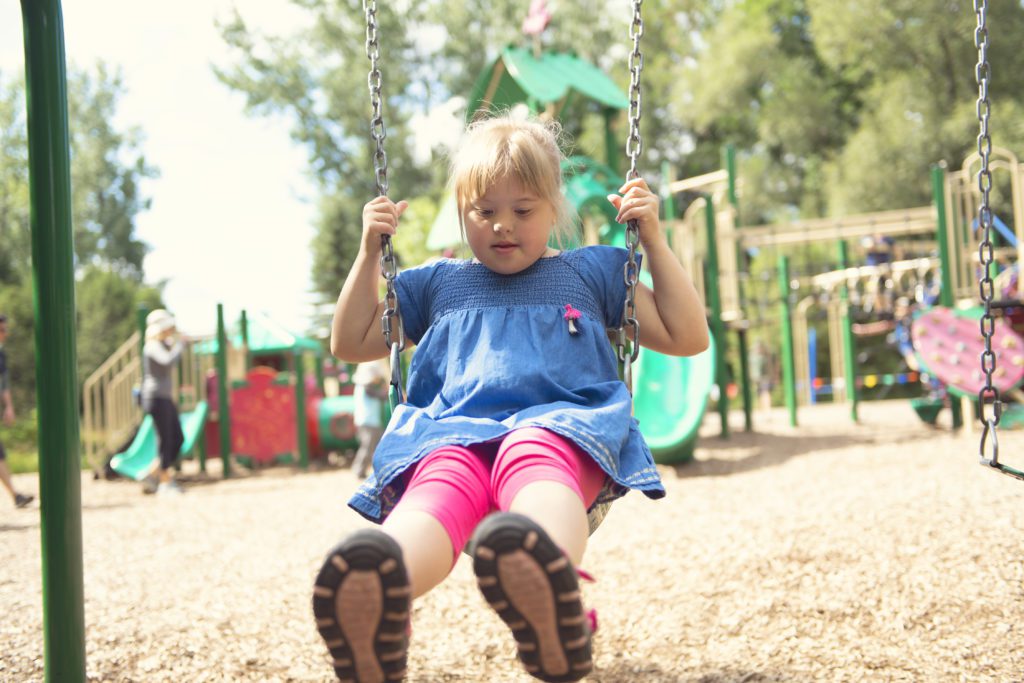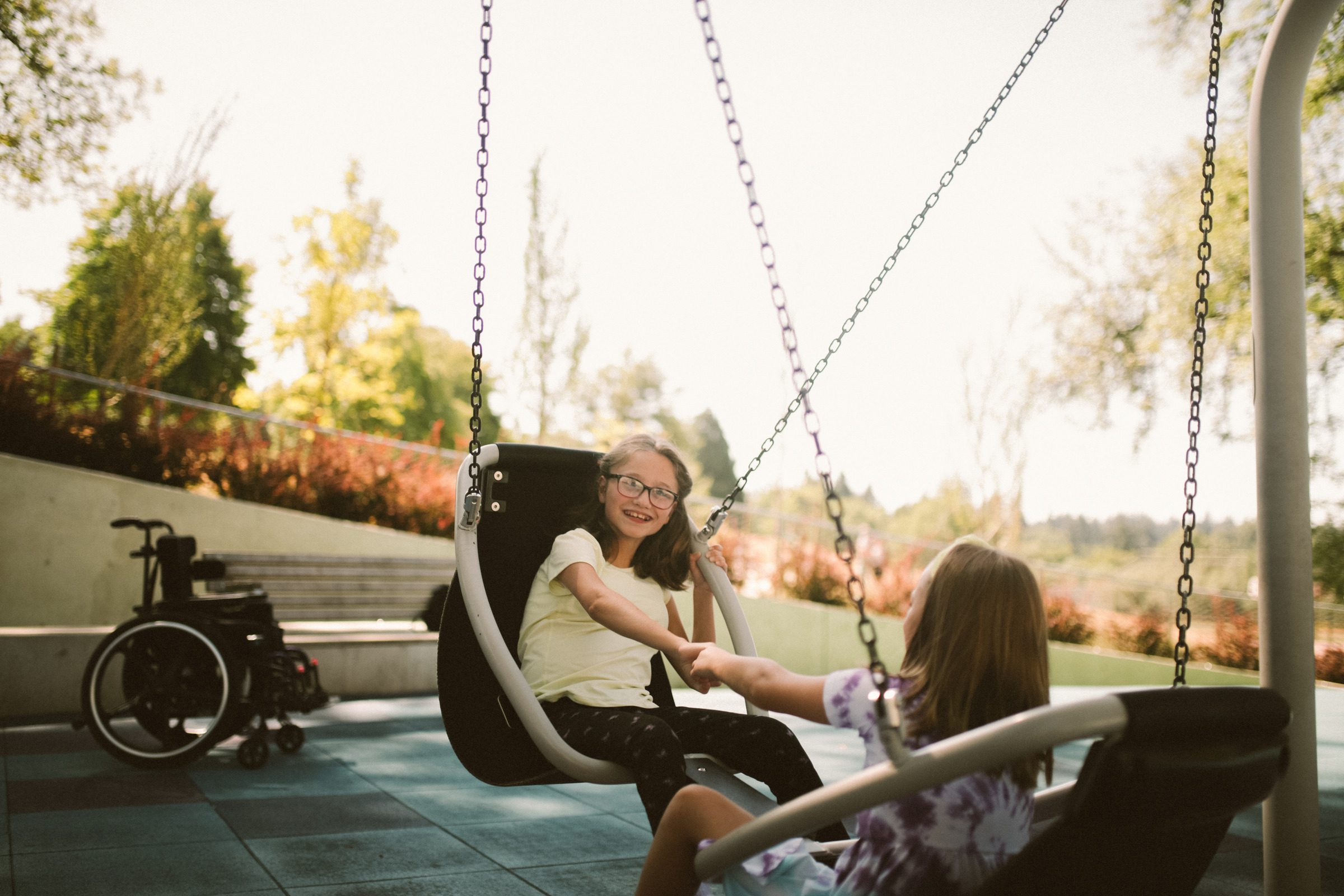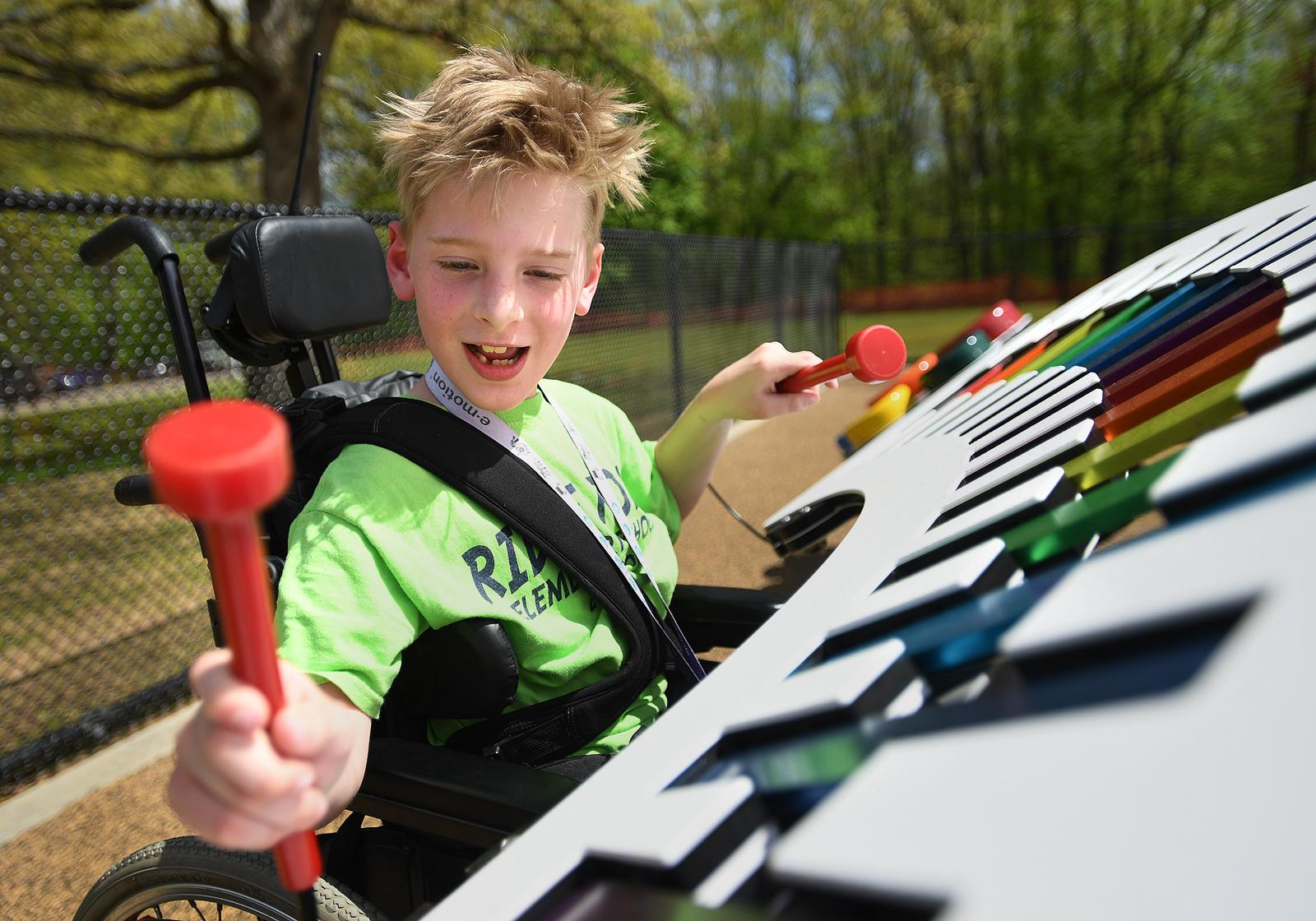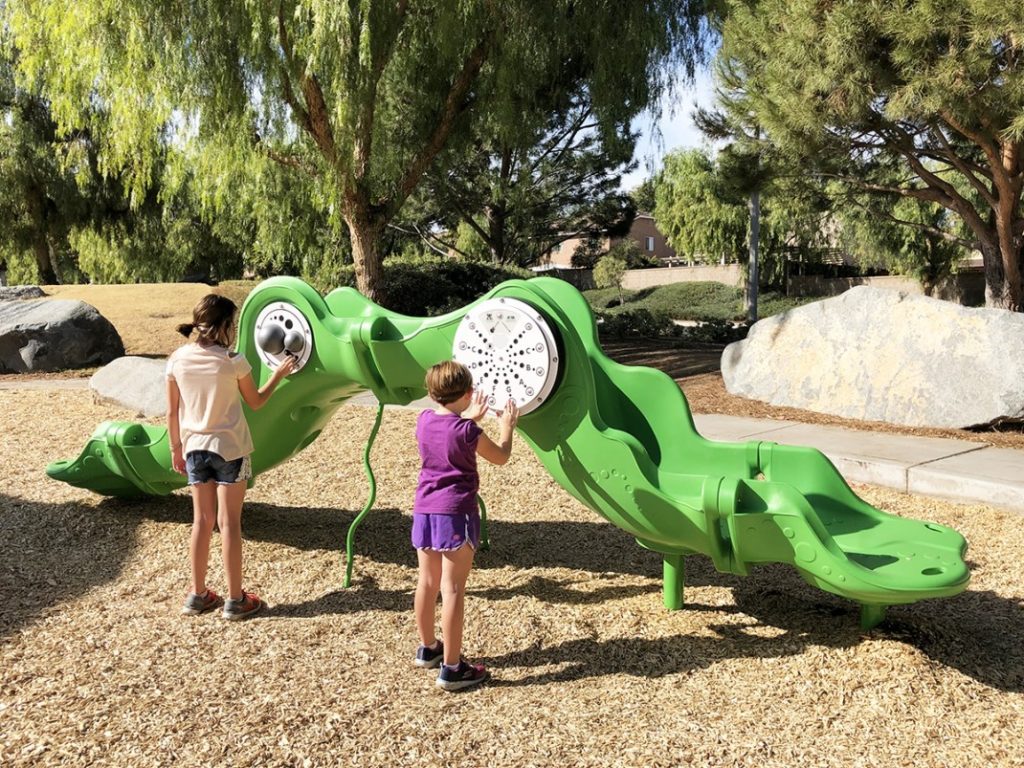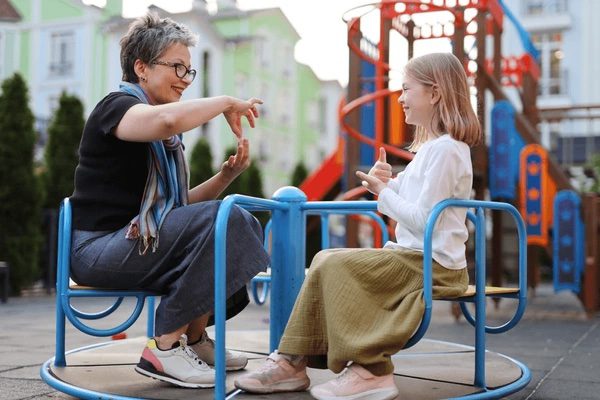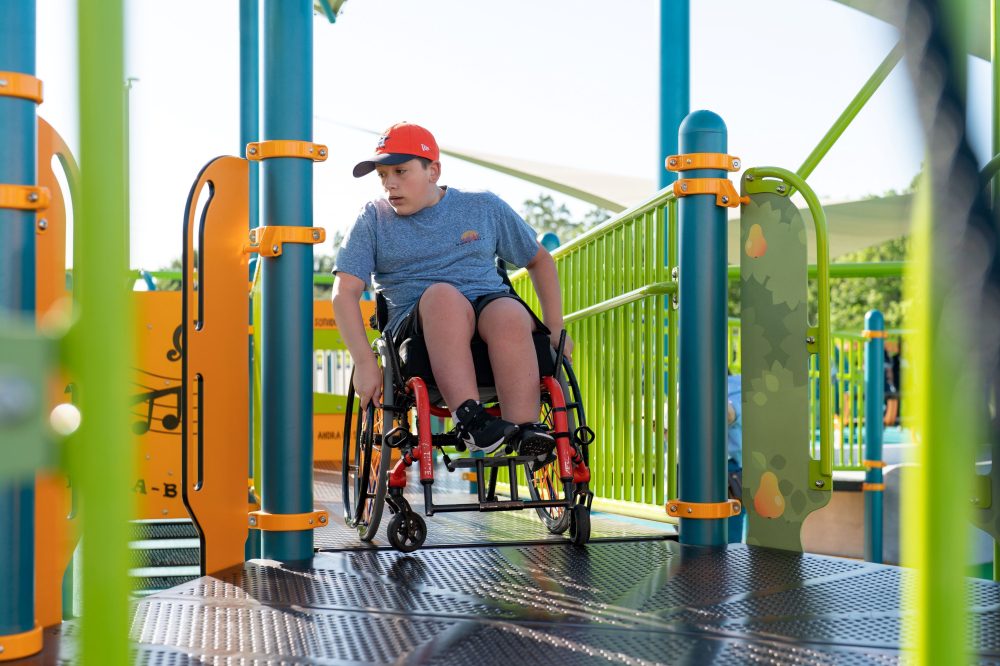
Inclusive Play
Breaking the Playground Status Quo
BEYOND BOUNDARIES
PLAYGROUND EQUALITY UNLEASHED
WHAT IS INCLUSIVE PLAY?
Inclusive play allows for all children, of all abilities, to play, learn, and grow together in the same recreational environment. An inclusive playground removes the barriers of exclusion by providing a sensory rich play experience for all children. Inclusive playgrounds are a place of fun and enjoyment where everyone is included. These playgrounds are designed to be multi-sensory, safe environments. Promoting inclusion in playgrounds can bring communities together in a way that focuses on educating all on the importance of inclusion for every day activities. Having an inclusive playground can show to all who enjoy it that people of all abilities enjoy playing, exploring, learning, and interacting.
What factors go into creating an inclusive playground?

The vestibular system is a foundation for developing sensory systems such as vision, touch, sound, and proprioception. It allows us to trust our movements and tolerate motion. Playground equipment such as roundabouts, spinning cups, seesaws, and slides can help improve a child’s vestibular processing.
Play equipment that involves activities such as jumping, pushing, pulling, and hanging nourishes proprioception. Swing sets, teeter-totters, and overhead ladders are examples of playground equipment that support this sense’s development.
Tactile equipment refers to structures and elements in a playground designed to provide sensory experiences through touch. These features are often designed to engage children and individuals with varying sensory needs, promoting tactile exploration and stimulation.
Auditory equipment refers to structures or installations in a playground designed to engage children’s auditory senses through sound-producing elements. These elements are typically interactive and can include items such as musical instruments, chimes, or other sound-making devices.
A visually accessible playground typically refers to a playground or recreational area designed to be inclusive and accessible to individuals with visual impairments or other visual disabilities. The goal is to create an environment where everyone, regardless of their visual abilities, can engage in play and recreational activities.
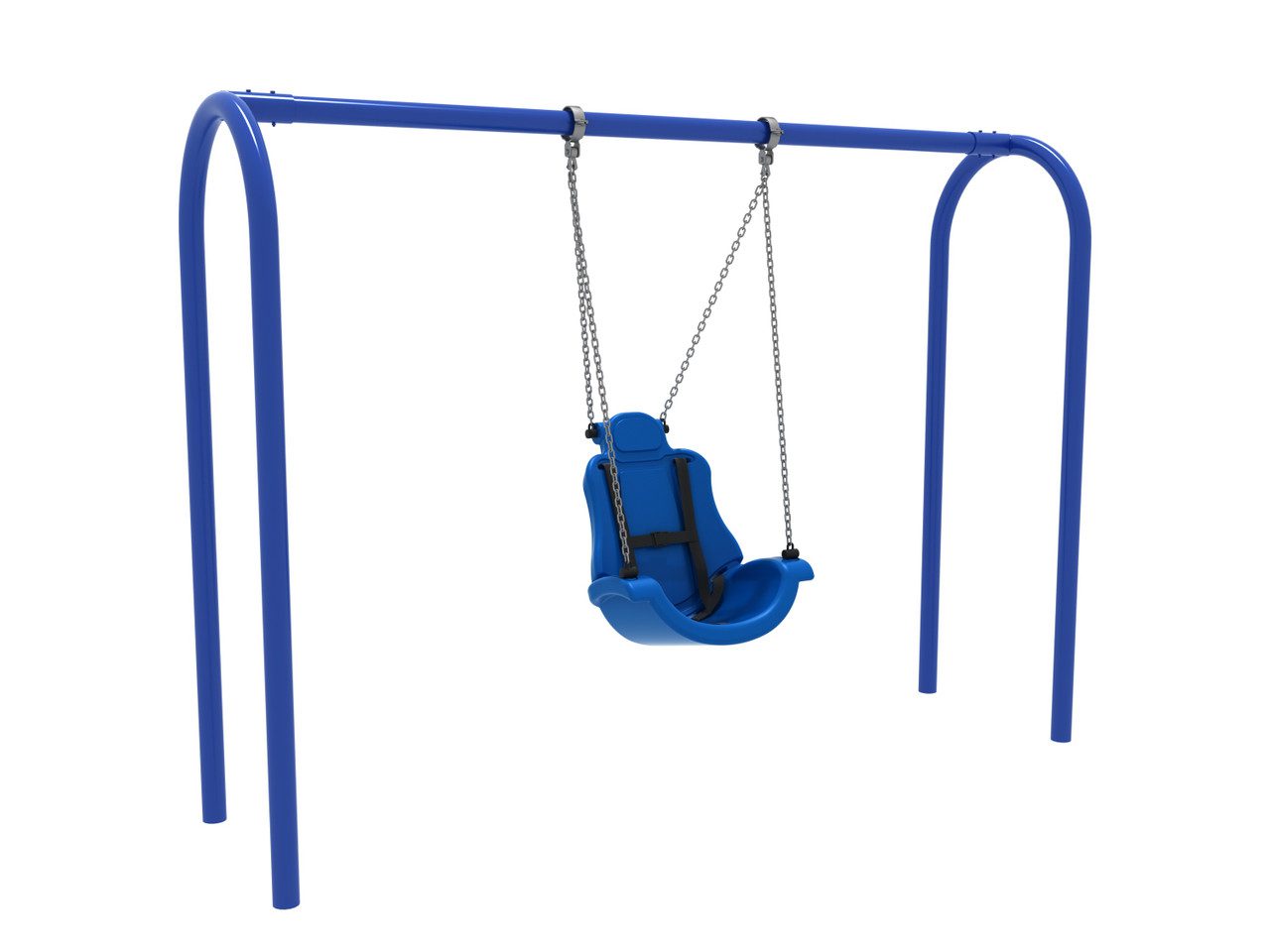
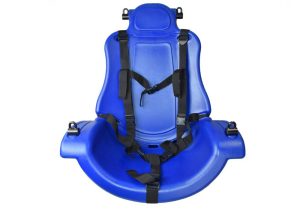

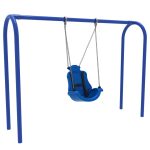
High-Capacity Adaptive Swing Seat
★★★★
★
4.2(1,079 reviews)
$899.00
was $1025.99
12% off
Flate Rate Shipping
This swing seat has a maximum weight capacity of 300 lbs and is designed for recreational areas that have older children with accessibility needs. It offers all the benefits of a typical, single-bay swing seat, but with a focus on supporting adults and children with disabilities.
Age Range
5-12 years old
Unit Size
| 37.5” x 32” x 34” |
While we do have options for all types of sensory learning, we understand that sometimes children can become overwhelmed with their environment. In times of sensory overload…
We also have areas that are designated to ease these confounding feelings. Orientation paths allow the children to decide on their own how much sensory input they wish to engage. Quiet spaces are a comfortable place for children to rest without the bustle of other playmates. The site amenities such as benches and tables allow children to step away from the playground to regain their focus. Having shading and shelters are a way to help children who may experience fatigue or other complications from excessive sunlight—children who are sensitive to sunlight, have Epilepsy, Cerebral Palsy, and Autism can greatly benefit from a shaded play area.
REAL PLAY: Real play choices offer equipment all throughout the playground for people who use mobility devices. Having this equipment can increase engagement in all play areas.
SOCIAL PLAY—Socializing in an environment of your peers is essential for developmental growth for children of all ages and abilities. Social play, however, isn’t always playing with others; sometimes, social play can be as simple as playing alone in a social environment or watching others play:
COOPERATIVE PLAY: Children who are able to engage in cooperative play have developed skills that allow them to interact with one another. They are able communicate with their peers in whatever way is comfortable for them.
PARALLEL PLAY: When two kids are playing next to each other, but not directly interacting with each other, they are experiencing parallel play. This type of play tends to happen on climbers, swings, and slides.
ASSOCIATIVE PLAY: It is not uncommon for children to mimic the actions of others. When a child is playing independently, but is doing the same thing as another, this is called associative play. This type of play tends to lead to some form of interaction between the children.
ONLOOKER PLAY: When a child watches others play without engaging in the activity with them, they are onlookers. The child may still communicate with the others without joining in the activity. This allows children to learn before they engage so they know when they are ready.
SOLITARY PLAY: During solitary play, children play, explore, and discover alone regardless if there are other children in the same area. This type of play can happen all throughout the playground and is great for self-discovery and growth.

